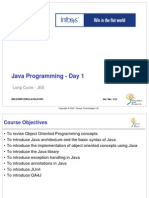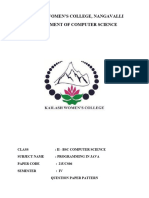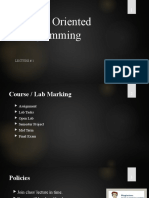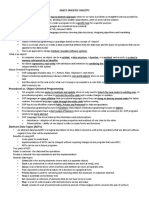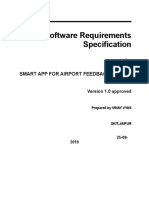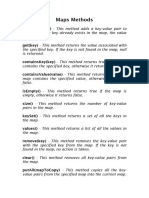0% found this document useful (0 votes)
24 views41 pages01 Introduction
The document outlines the course CSE 223: Programming -2, taught by Prof. Dr. Khaled Nagi at Alexandria University, focusing on object-oriented programming principles, differences between C++ and Java, and various programming paradigms. It includes course organization, grading schemes, materials, and a detailed breakdown of topics such as encapsulation, inheritance, and polymorphism. The course emphasizes the importance of software development beyond just programming, incorporating design patterns and object-oriented analysis.
Uploaded by
Asmaa AbdoCopyright
© © All Rights Reserved
We take content rights seriously. If you suspect this is your content, claim it here.
Available Formats
Download as PDF, TXT or read online on Scribd
0% found this document useful (0 votes)
24 views41 pages01 Introduction
The document outlines the course CSE 223: Programming -2, taught by Prof. Dr. Khaled Nagi at Alexandria University, focusing on object-oriented programming principles, differences between C++ and Java, and various programming paradigms. It includes course organization, grading schemes, materials, and a detailed breakdown of topics such as encapsulation, inheritance, and polymorphism. The course emphasizes the importance of software development beyond just programming, incorporating design patterns and object-oriented analysis.
Uploaded by
Asmaa AbdoCopyright
© © All Rights Reserved
We take content rights seriously. If you suspect this is your content, claim it here.
Available Formats
Download as PDF, TXT or read online on Scribd
/ 41










